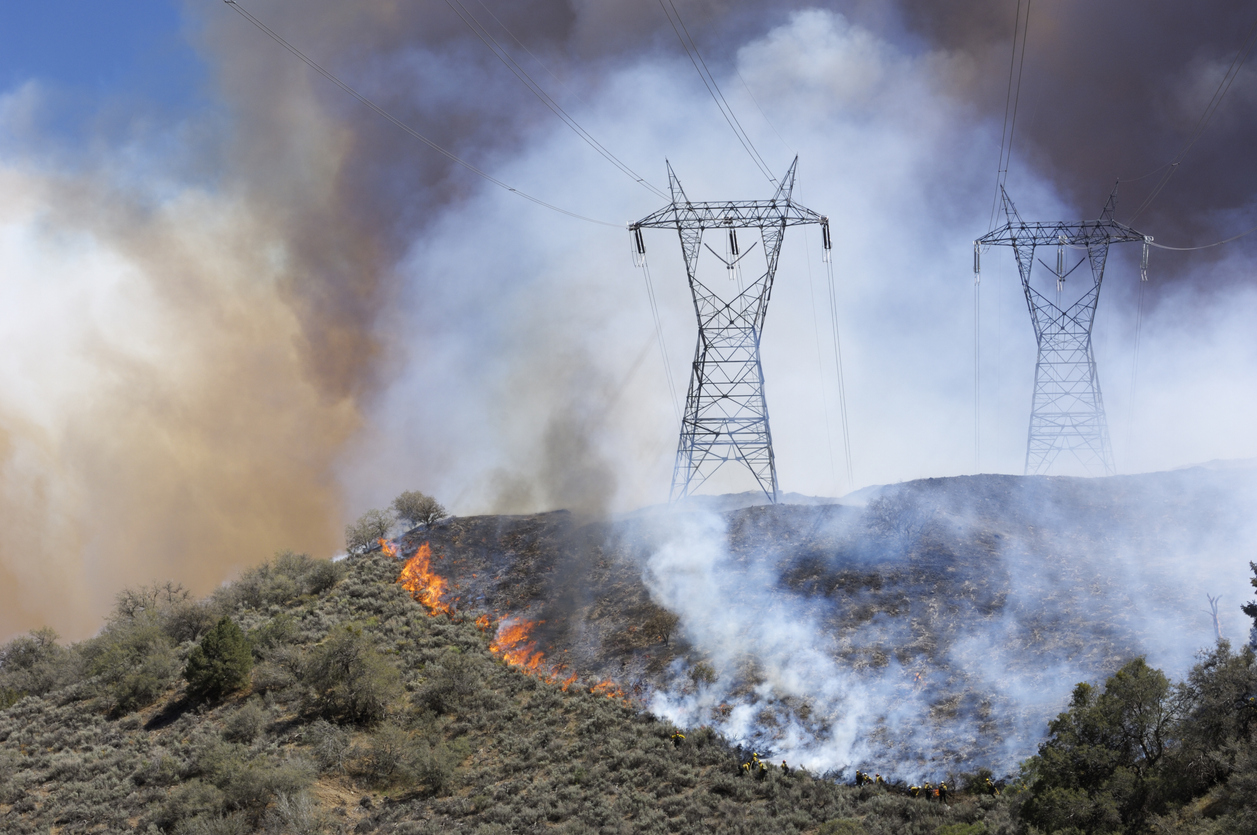Current fires have spurred evacuation orders in California, Oregon and Washington and darkened skies in the San Francisco area. In California, fires have burned over 3 million acres and claimed at least 11 lives.
Lightning was a factor in many of these fires. But past blazes, including the 2018 Camp Fire that destroyed the town of Paradise, Calif., were started by faulty transmission equipment. In that case, a worn piece of metal that holds power lines, known as a C-hook, broke and dropped a high-voltage electric line that ignited that fire.
In June, PG&E Corp., parent company of Pacific Gas and Electric Co., pleaded guilty to 84 counts of involuntary manslaughter for its role in sparking that fire. The company said it would pay the maximum of approximately $4 million in fines including the expenses related to a district attorney’s investigation.
Now PG&E and other major California utilities are exploring how AI and other technologies might reduce the risk that damaged gear could start fires. They are deploying drones, computer vision and machine learning to spot potential equipment issues, such as a worn or rusty C-hook, before a failure.
“We firmly believe that over time, the entire industry—world-wide, globally—will eventually leverage some sort of remote technology to inspect electrical equipment,” said Mike Glass, director of data and analytics in PG&E’s IT organization. “And we believe there will be increasing levels of automation and artificial intelligence inside of that process over time.”
Drone cameras can take high-resolution photos of distribution poles and transmission towers, attached equipment and the surrounding area. Computer vision can be trained to classify what something is, how it should look and spot if something is broken. Machine-learning can analyze images, then identify subtle changes and anomalies, such as the beginnings of corrosion or other damage.
The utilities are not using their drones or AI to help manage or combat the current fires. But they say AI and other technologies help with regular monitoring of their systems. PG&E, the state’s largest utility, has been using analytics and machine-learning models to predict how its transmission equipment will handle high-wind events, allowing its operations staff to give priority to maintenance work and even shut power to an area if necessary during severe weather conditions, said Mr. Glass.
Even without AI predictions, the utility will sometimes de-energize its lines. In a preventive measure, PG&E earlier this week shut off the power to about 172,000 customers. By Wednesday night, it had restored the power to about 97% of them.
The California Public Utilities Commission’s high fire-threat district map classifies more than half of PG&E’s 70,000-square-mile service area in Northern and Central California as having a high fire threat.
PG&E, which has been using drones for some time, last year began using computer vision to enhance remote aerial inspections of transmission equipment in high risk-fire areas.
The utility wants to relieve inspectors of routine tasks, such as marking images to indicate how maintenance and repair workers can get to transmission towers. That is important, especially in rural areas where there is vegetation and other impediments. During the inspection process, electrical workers need to scan hundreds of images of each structure in a given high-fire-risk area to find a right-of-way or access path.
“We want the inspectors to focus their entire attention on looking for ignition risks,” said Kunal Datta, a PG&E product manager.
PG&E’s computer vision is now analyzing images and identifying approach paths, which the utility says reduces inspection time from about 80 to 52 minutes per structure.
Other California utilities are deploying advanced technologies to monitor equipment. Sempra Energy’s San Diego Gas & Electric started using drones and computer vision toward the end of last year to inspect its distribution equipment in high-risk areas. Later this month it will use the technologies to start inspecting the transmission lines. The utility’s service territory covers 4,100 square miles, 64% of which is in the high fire-threat district.
Edison International’s Southern California Edison is conducting a pilot project using computer vision and machine-learning to inspect distribution and transmission lines in high-risk fire areas, or about 27% of the 50,000 square miles the utility covers.
PG&E also is in the process of deploying machine-learning models to analyze images of its transmission equipment to spot indications of failure. It plans to roll it out more widely in the fourth quarter.













